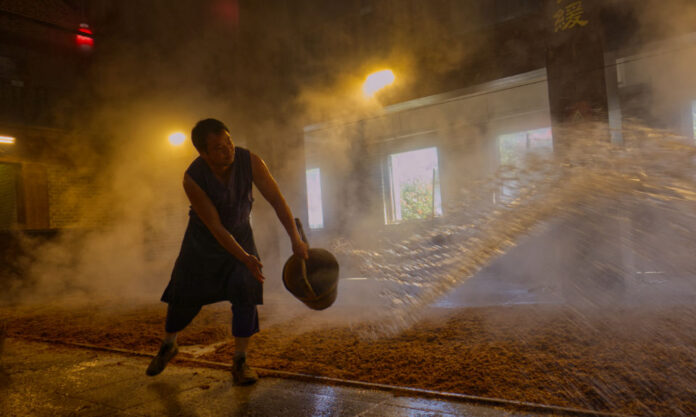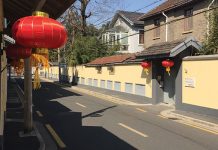An enormous, faux-ceramic-baijiu urn greets visitors to the Yanghe Winery Culture Tourist Area in Suqian, Jiangsu Province.
It’s a metaphor for the size of that which lies dormant inside the urn. And yes, it’s full (of you know what). The move, invisible to all and therefore somewhat pointless, would have been be a matter of national pride.
Going into that therein are waters which come in part from nearby Hongze Lake and Luoma Lake.
In the former’s Hongze Lake Wetland Scenic Area, the first thing to hit you is the silence. Then something else becomes abundantly clear. The place is alive. Very alive.
For the Hongze Lake wetland is a stopover for over 200 migratory-bird species, some of which are National First Grade Protected Species, such as the red-crowned crane and oriental stork. Then there are also the protected egrets, cygnets and black terns.
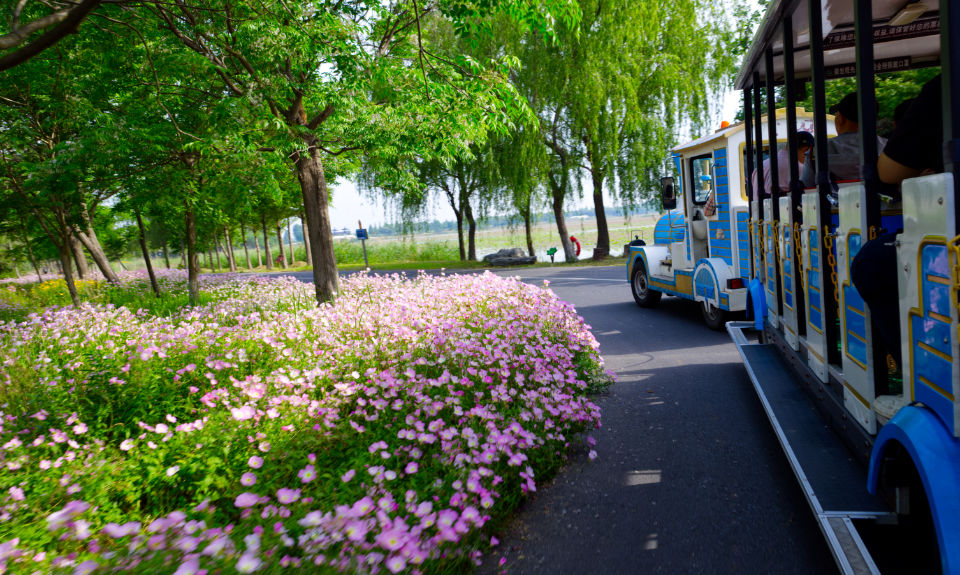
Their calls break the silence in an unspoiled-wetland wilderness, one where the only sign of humanity is a mobile-phone tower in the distance. That, and a soaring melody extolling the beauty of Hongze Lake, the fourth-largest freshwater lake in all of China, to visitors on board the comedic-tourist road train.
“Hongze Lake, the wonderful
Great Wetland, the beautiful.
The clean and clear water
Reflects views that never fade.”
There can be no mistake that the booming wetlands are the next big thing in China tourism. Legally, they have received a shot in the arm too. On 1 June, 2022, as the first such law of its kind, was officially implemented the Wetland Protection Law of the People’s Republic of China. It’s a law that provides an important legal basis for all of society to carry out wetland protection and restoration.
Not so far away lies the Shuanggou Liquor Cultural Tourism Zone. Located at the intersection of the Huai River and Hongze Lake, Shuanggou is China’s only wetland distillery.
And it’s also China’s only distillery that adopts drunken-ape culture as its theme, thanks to a finding of the earliest gibbon fossil in the area in 1977. Completely different from other gibbon fossils unearthed in Africa, Europe and elsewhere in Asia, this particular ape, experts believe, was three sheets to the wind.
The world’s first drunk.
Earning its nickname, “Shuanggou Drunken Ape”, the fossil was dated back to the Miocene Epoch, some 10 MYA. The ape may have been plastered, but its hangover (without doubt the longest in all of history) today provides gainful employment for thousands, in an industry that is one of China’s largest money spinners.
Shuanggou is also one of the brands owned by the liquor behemoth that is Yanghe, in turn a producer of one of China’s dominate red wines.
According to Yanghe’s website, Shuanggou “changes the traditional concept that baijiu only focuses on taste. It integrates the concepts of healthy drinking and production [plus] technological innovation”.
That high tech is manifest at Shuanggou by a 1,200-metre-long roll conveyer that intelligently and near silently propels around cases of finished product, to be ultimately received by robots with sufficient reach to store them by the pallet around a warehouse 40 rows deep and 24 metres high.
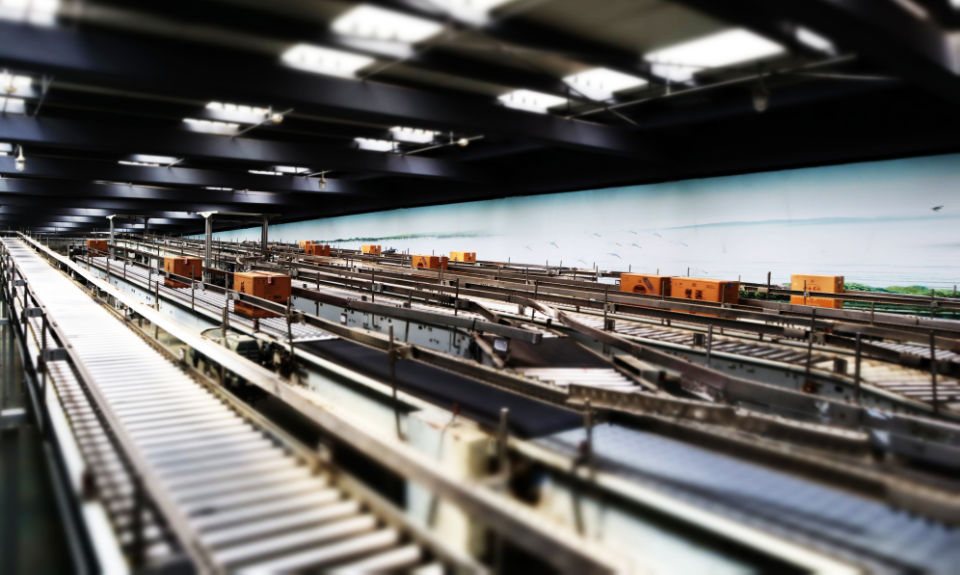
Then the fun begins. Along their tour, visitors are introduced to a geometrically-challenged room and directed to follow the arrows on the floor. The offset sense of balance in the inner ear generated by the room, plus a shot of alcohol provided directly prior, is sufficient to give visitors the disorienting impression of being on a ship rolling heavily in high seas.
It’s safe to say the folks at Shuanggou certainly have a sense of humour. It’s tourism with Chinese characteristics. And it’s not over yet.
Back at Yanghe, in the City of Suqian, the Yanghe Winery Culture Tourist Area sprawls over an area of some 4.5-million square metres.
Therein, interested visitors shall learn of the rice, corn and wheat, cut from Yanghe’s 600-square-kilometre base of grain from nearby counties, and combined with a few other select (and secret) ingredients, which will be crushed to become the mash to fill some 4,300 fermentation pits.
The epic nature of the undertaking is closed out by they all being housed in a single shed; Yanghe 31 Kua, measuring a whopping 698 metres by 133 metres.
After getting to see much of this in action, the real-life production of the nation’s national spirit, it’s back to school. Or rather, chemistry class.
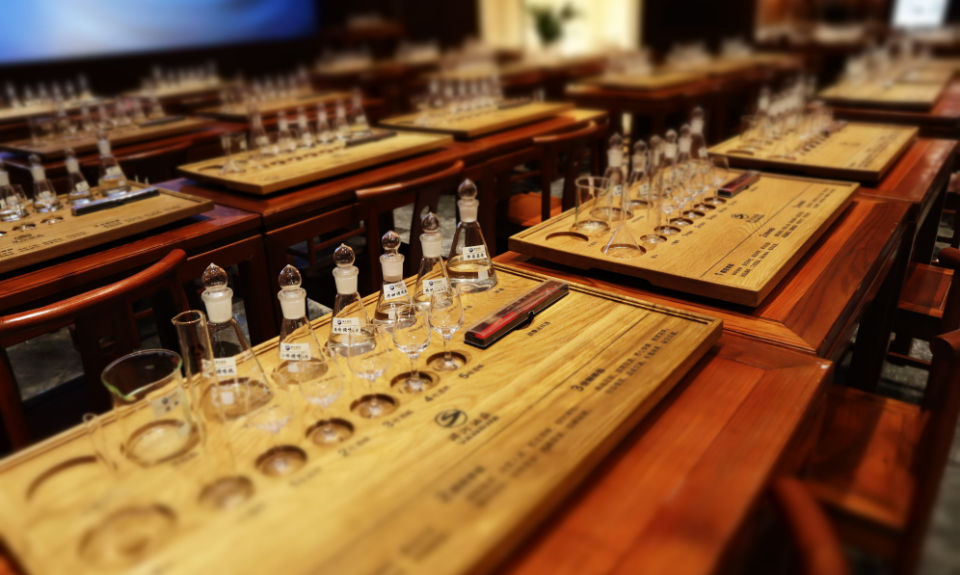
There, student tourists are provided an insight into what makes one baijiu different from another. Beginning with a flask of base alcohol, visitors use the thinnest of syringes to dispense an infinitesimally-small drop of another alcohol into the base, to witness the change in flavour. They also need have a little sample of each, of course.
After, in an artfully-orchestrated move, visitors, by now mostly inebriated, are paused during their tour for an alcohol test. But there’s a fun twist to the activity.
For a quick swab of the cheeks is all that it takes to determine, not the testee’s blood-alcohol levels, but their capacity for alcohol. Tour groups continue the fun later when they receive the results, comparing the alcohol tolerance of every last member of the group, even the youngsters.
Parents can therefore now know well in advance whether their child will turn out to be a good drinker.
Now that’s tourism with, a difference, and arguably, coupled with China’s wetlands, quite a future.


